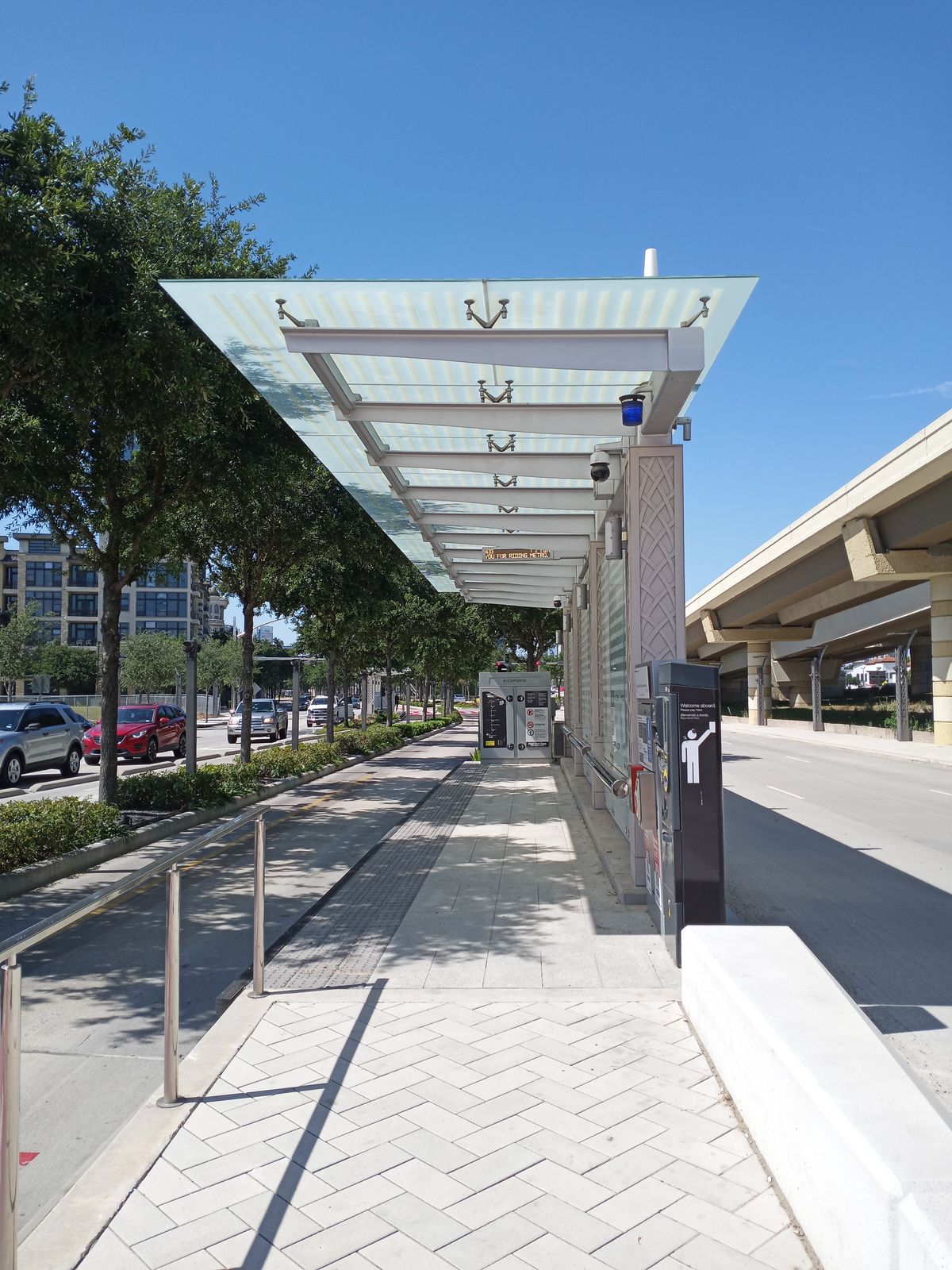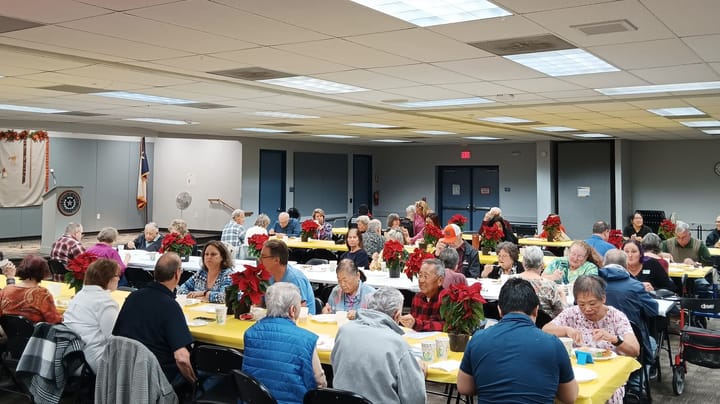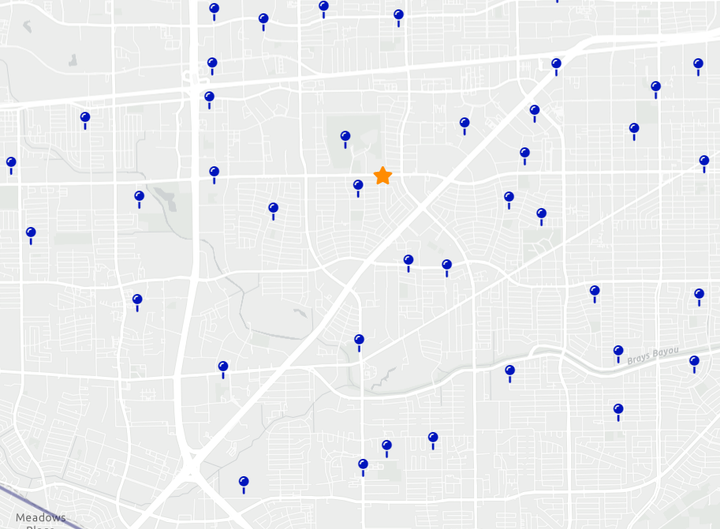What SW Houstonians Think of Extending METRO's Silver Line to Hillcroft and Bissonnet

Leo Simon’s palms were covered with white tile dust as he boarded the silver METRO bus at Four Oaks and Post Oak at 6:34 PM. After a day of maintenance work in the Galleria area, he needed to take three buses to get to his home in the Bissonnet/Wilcrest area: first the Silver Line; then the #20 Canal/Memorial; then the #65 Bissonnet.
Simon is a poster child for the Gulfton Corridor project: METRO’s plan to extend the Silver Line southwest all the way down to Hillcroft and Bissonnet. It would cut his three-bus trip down to two. And he likes the project.
As he sat on the bus next to his black NYPD hat, which he had set on his blue duffel bag, he recounted how he used to ride the bus on Post Oak before the Silver Line was built. The old bus was slow, he said, getting stuck in traffic too much. So he appreciated that the Silver Line buses have their own dedicated lanes.
“Send the Silver Line all the way to Victoria, Pearland, and Missouri City,” he said.
But not everyone agrees.
“They shouldn’t call it the Silver Line, they should call it the slow line.” David Williams used a concrete picnic table as a backrest as he sat under low-hanging branches in the corner of Gulfton's Burnett-Bayland Park, where METRO plans to build a Silver Line stop.
Williams, a Bellaire resident, said he regularly biked to the Westpark/Lower Uptown Transit Center (another Silver Line stop) to catch buses, although he’s rethinking that after his bike was stolen at the transit center last week.
Despite his heavy reliance on METRO, he wasn’t impressed by the Silver Line. He says that it’s fast on the freeway (610), but it “hits every light through the Galleria and sits there.” METRO advertises the Silver Line as having signal priority, meaning that it gets to go through lights ahead of other traffic. But if that’s true, Williams thinks that the bus “shouldn’t be sitting at no light for two minutes.”
Alicia Church, owner of Sands Point Property, LLC, wasn’t enthusiastic about the extension either—but for a different reason.
At METRO’s June 28 community meeting at the Southwest Multi-Service Center, Church, wearing a white shirt and purple necklace, said she was worried about “unwanted” or “mischievous” traffic coming in on the Silver Line buses. Her company owns office buildings near Hillcroft and Sands Point (a proposed Silver Line stop), and she wants her tenants—from an immigration passport service to an IT business—to know that her property is in "a safe area.”
Are these concerns legitimate? David Williams thinks so. According to him, “crazy people” board METRO downtown, get off the bus, and walk around Bellaire. He said it’s the reason many Houston suburbs like Katy and Missouri City aren’t connected to METRO: they don’t want to bring in criminals from other neighborhoods. “It’s a good reason,” he said.
He suggested asking the Bellaire police about high crime rates around the Westpark/Lower Uptown Transit Center. The Bellaire police pointed to the crime maps on their website, but there did not appear to be a thicker cluster of crimes right around the transit center. (There were plenty of thefts in the Galleria area, though.)
Some people were more optimistic about the Gulfton Corridor project.
At another picnic table at Burnett-Bayland park, a man named Chris, who declined to give his last name, sat with what appeared to be his parents and sister. Wearing a pink UnderArmor shirt, he said he lives in an apartment right across the street, and he was in favor of the Silver Line extension: “I think that most people are gonna ride that.”
He wouldn’t be riding the line to work since his job is in south Houston, but he already drives to the Galleria 1-2 times per week to shop or go to the waterpark: “It’s really fun in a group.”
Although he hadn’t rode on the Silver Line, he’d seen it and liked the concept of dedicated bus lanes, believing that they lead to less accidents and keep buses from getting stuck in traffic.
He rode METRO frequently 4-5 years ago. Now, he said, it’s still good to have the bus as an option if his car breaks down.
Daniela Garcia, a Sharpstown resident and METRO rider, hasn’t been on the Silver Line either, but she thinks extending it is “a good idea” too.
With a pink bucket hat and red-and-black bicep tattoos, she sat at the bus station just east of the Conquistador high rise on Bellaire Blvd. She was waiting for the #9 to take her to her job near the Mahatma Gandhi business district on Hillcroft and 59.
She goes to the Galleria “quite often” with friends, and “the parking over there is pretty hectic.” If the Silver Line was extended down to Bellaire, she could easily transfer to it from the #2 Bellaire line, which she rides regularly. It also might help her cousins who work in restaurants in the Galleria area.
But she thinks the biggest thing METRO could do to improve their services would be to put “little houses”—shelters—“on every bus stop,” with “somewhere to sit.” Right now, many METRO stations in southwest Houston are just metal signs with no shelters or benches.
So far, the Silver Line is only fulfilling half her wish. The bus stations in the Galleria have shelters, but no seats. Some riders end up sitting on low-to-the ground concrete. It is unclear whether METRO will follow the same station model in the Gulfton Corridor extension.
Many people on the Sharpstown Neighborhood Facebook group have also expressed concern about how many trees, grassy areas, and traffic lanes will be removed to make way for the dedicated bus lanes. METRO has released detailed concept drawings that show how the project may affect local roadways, medians, sidewalks and bike lanes, but the plan is not finalized.
Those impacts are some of the costs to weigh against the benefits that METRO advertises. (The other cost, of course, is to American taxpayers: METRO plans to fund the project through federal money.)
Are the benefits worth the costs? One might expect the answer to be split along simple lines: bus riders say yes; car drivers say no.
But it’s more complicated than that. Chris, who drives to visit the Galleria, was still in favor of the Gulfton Corridor project. David Williams, still a frequent METRO rider, was unhappy with the Silver Line. And some people, like Daniela Garcia, use a combination of car trips and bus rides to get around southwest Houston.
No matter which side of the “car versus bus” debate southwest Houstonians fall on, most can agree that local transportation is less than ideal. Whether it’s the traffic backups on 59, or the lack of fast and easily accessible bus routes, everyone has something to gripe about.
But the tougher question is “How do we make it better?”



Comments ()